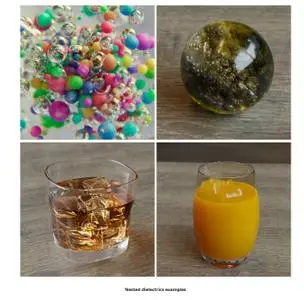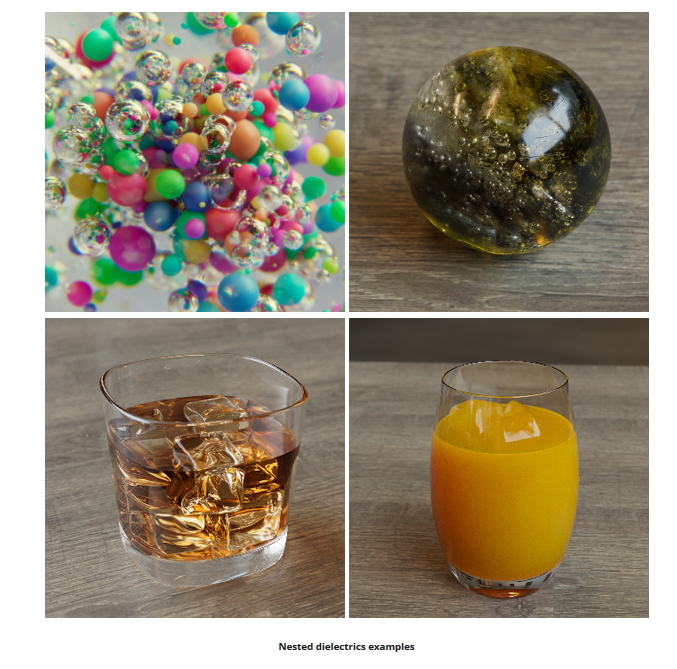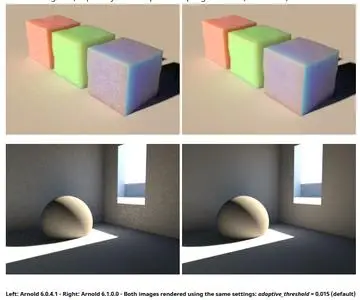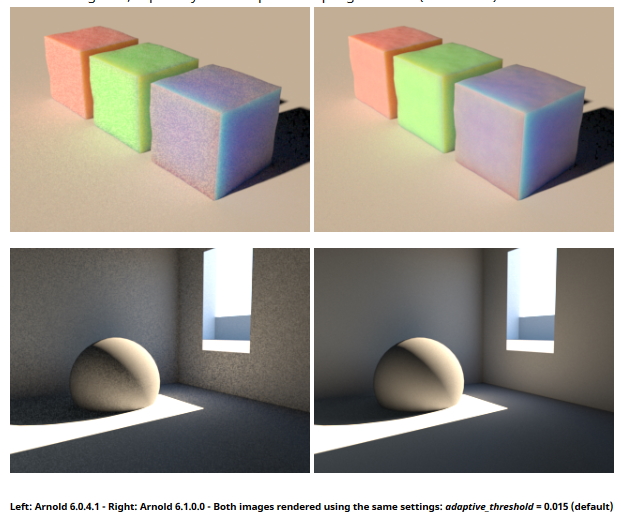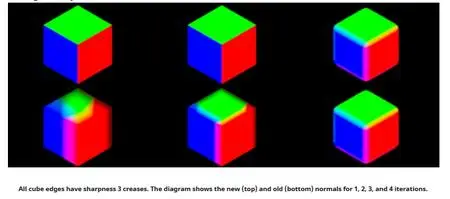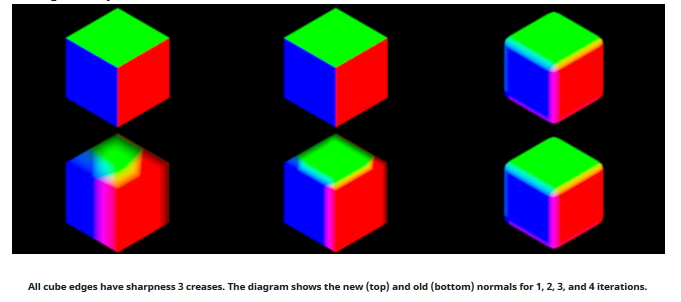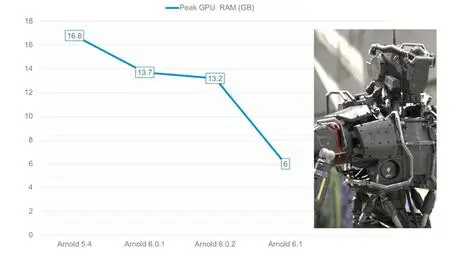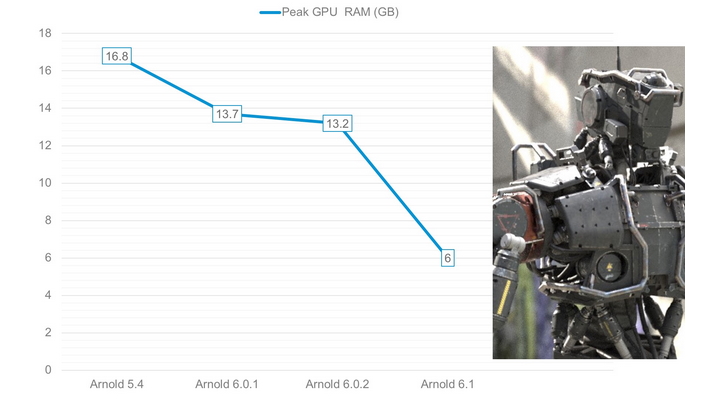Solid Angle 3ds Max to Arnold 4.2.0.55 | 908.3 mb
The Arnoldrenderer development team is pleased to announce the availability of Arnold (or MAXtoA) 4.2.0.55 for Autodesk 3ds Max.This release introduces Arnold 6.1.0.0 and is a feature release bringing a brand new post-processing framework (imagers), support for nested dielectrics, much improved progressive and adaptive sampling, on-demand texture loading on GPU, and a variety of enhancements and fixes.
Enhancements
Imagers: We're introducing a brand new framework to apply post-processing effects such as color correction, vignetting, or tone mapping. A new type of post-processing nodes called imagers operate on pixels before the output driver. Imagers can be chained. The initial set of imagers consists of:
. imager_exposure
. imager_color_correct
. imager_lens_effects
. imager_white_balance
. imager_tonemap
Imagers work both in batch and interactive contexts. While imager parameters can change interactively during rendering, adding a new imager currently requires the render to be restarted, so it's a good idea to add the ones you will need to adjust at the beginning of an interactive session. We are looking at removing this limitation in a subsequent release. (core#8368, core#9716, core#9723, core#9724, core#9867, core#9868, core#9869, core#9938).
Nested dielectrics: Physically-correct reflection and refraction of rays in scenes with adjacent dielectrics, such as liquids in glass vessels, has been implemented by resolving overlapping, i.e. "nested", dielectrics via a priority system. This allows for more realistic renders of scenes such as glass containers with liquid contents and bubbles, correctly accounting for the change in the index of refraction as rays refract through the transparent media. The new dielectric_priority parameter on the standard_surface shader assigns a priority to the internal dielectric medium of the closed transparent object the shader is assigned to. These priorities specify that in an area of overlap of two transparent objects, only the highest priority dielectric medium exists (see the schematic glass of water below). The priority is simply a signed integer (default 0), which can be increased or decreased as needed to define the dielectric medium in the overlap areas. If priorities are made equal, then media are effectively blended in the overlap. The effect can be disabled globally with options.dielectric_priorities (Nested Dielectrics in the Advanced tab of the render settings) in case you need to revert to the legacy mode, which does not correctly compute the refractions. (core#6023)
Improved progressive and adaptive sampling: Better sampling now results in much faster noise convergence, especially with adaptive sampling enabled. (core#9941)
Improved performance on Windows: Arnold now runs on average 7-8% faster overall on Windows. (core#5481, core#9876, core#9975)
Improved IPR interactivity: IPR interactivity on both CPU and GPU, especially when moving the camera in a scene with many nodes (thousands to millions of meshes, ginstances, lights, shaders, etc.), is improved. For instance, a scene with 24,433 ginstances and simple shading went from 8 fps to 14 fps on the CPU and about 3 fps to 20 fps on the GPU. (core#8662, core#9918, core#10027, core#10029)
Improved performance in Toon on Windows: The contour_filter used for toon rendering should now be faster and scale better especially on Windows, with up to 3x speedups on AMD Threadripper 2 and up to 4x speedups on AMD Threadripper 3 CPUs. (core#7844)
Toon AOV prefix : The toon shader has a new optional aov_prefix that will be prepended to the toon AOVs' names. For instance, if aov_prefix is "toon_", the toon diffuse AOV will be written out to "toon_diffuse". This can be used when you need to access both the toon AOVs and the core's LPE AOVs. (core#9823)
Improved soft creases in adaptive subdivision: Normals for soft creases follow the geometry closer for low iterations. (core#9971)
AA seed now included in EXR metadata: The AA seed of a render is now also included in EXR metadata. (core#9895)
Improved support for MaterialX: Material nodes are now supported, shader nodes and node graph outputs can be connected to material node inputs. Node definitions implemented as node graphs can contain both Arnold native shaders and MaterialX standard library shaders. This is useful to build reusable and portable material groups and definitions, for example by using standard_surface with MaterialX patterns. The environment variable ARNOLD_MATERIALX_NODE_DEFINITIONS can now point to directories and load multiple node definitions (see here) (core#9204, core#9618, core#9926)
SSS type for Physical Material: You can now choose which Arnold Standard Surface SSS type will be used when rendering Physical Material in the render options. (maxtoa#722)
Import/Export MAXscript commands: Import and export materials MAXscript commands are now available. (maxtoa#814)
Import multiple materials: Arnold Menu->Import/Export->Import Materials lets you ctrl-click to pick more than one .ass/.mtlx to import several materials at once. (maxtoa#829)
New parameter for mix_shader: The add_transparency parameter is now exposed on the mix_shader shader. (maxtoa#854)
Physical camera exposure in Arnold Render View and ASS files: The physical camera exposure controls now apply when rendering in the Arnold Render View and in exported .ass files. (maxtoa#859)
Support for 3ds Max Bitmap filters: The filter (Pyramidal, Summed Area, None) of Bitmaps is now translated correctly to the Arnold image shader. (maxtoa#871)
GPU Enhancements
Improved on-demand loading of textures: The GPU renderer can now partially load textures which results in important GPU memory savings when using tiled and mipmapped textures, such as from .tx textures. In a typical scene, the amount of memory needed for textures could be reduced to be up to 5x smaller. A recent driver is needed for this feature (core#9984).
Initial support for light linking: Initial support has been added for light linking. Currently, there is a limitation that light linking is not supported on volumes. (core#9890)
Support light AOV groups: Adding light AOV groups in LPEs is now supported on the GPU. (core#9882)
Improved OSL JIT compilation performance: OSL JIT compilation performance has been improved, meaning faster time to first pixel and improved interactivity when using OSL shaders. The improvement averaged 6.3x faster during testing. (core#10004)
Improved support for min pixel width and thin-walled sampling: We have improved compatibility with the CPU renderer for min pixel width on the GPU and thin-walled sampling on zero roughness surfaces. (core#9291)
Partial GPU IPR output: Like on the CPU, when the FPS goes below a certain threshold (5fps by default), instead of not displaying anything, the GPU will at least display the pixels that have finished rendering. Since GPU currently renders pixels in a top to bottom ordering, this will result in the top part of the image being updated while the lower part becomes stale. (core#10027)
OptiX cache location change: The Optix cache directory used to be of the form: arnold-<ARNOLD_VERSION>_driver-<DRIVER_VERSION>. Now it is simply arnold. This means the same cache will be used across driver and Arnold versions. Upgrading to a new version will still likely cause a lengthy JIT/cache pre-population, but it will reduce disk usage as old versions will not stay around-consuming disk space. (core#9239).
Incompatible Changes
Correct refractions with nested dielectrics: Refraction through adjacent transparent media now looks more physically correct thanks to nested dielectrics resulting in a look change. If you need to revert to the legacy unphysical behavior for compatibility reasons, you can disable nested dielectrics globally by setting options.dielectric_priorities to False.
mix_shader add for transparency: Previously, the add mode of the mix_shader also added the transparency closures, which means that effects such as min pixel width would be double-counted, leading to objects disappearing. Now, we will add only non-transparency closures, while we pass through the max of the transparency closures. The old behavior can still be obtained by setting add_transparency to true (core#9952).
Skipped node updates: In order to improve IPR interactivity, we skip the per-frame node update if we believe that node has not changed. If our internal heuristics for detecting node changes is wrong and node_update was supposed to be called, you can set the force_update metadata on your node:
node_parameters
{
AiMetaDataSetBool(nentry, nullptr, "force_update", true); // depends on camera node
so that Arnold will always run node_update on every render pass. At the moment, this should only be needed for nodes that access options.camera in their node_update. If you do not have access to your shader's source code, you can globally disable this optimization by setting the options.enable_fast_ipr to false (core#8662).
Imagers: We're introducing a brand new framework to apply post-processing effects such as color correction, vignetting, or tone mapping. A new type of post-processing nodes called imagers operate on pixels before the output driver. Imagers can be chained. The initial set of imagers consists of:
. imager_exposure
. imager_color_correct
. imager_lens_effects
. imager_white_balance
. imager_tonemap
Imagers work both in batch and interactive contexts. While imager parameters can change interactively during rendering, adding a new imager currently requires the render to be restarted, so it's a good idea to add the ones you will need to adjust at the beginning of an interactive session. We are looking at removing this limitation in a subsequent release. (core#8368, core#9716, core#9723, core#9724, core#9867, core#9868, core#9869, core#9938).
Nested dielectrics: Physically-correct reflection and refraction of rays in scenes with adjacent dielectrics, such as liquids in glass vessels, has been implemented by resolving overlapping, i.e. "nested", dielectrics via a priority system. This allows for more realistic renders of scenes such as glass containers with liquid contents and bubbles, correctly accounting for the change in the index of refraction as rays refract through the transparent media. The new dielectric_priority parameter on the standard_surface shader assigns a priority to the internal dielectric medium of the closed transparent object the shader is assigned to. These priorities specify that in an area of overlap of two transparent objects, only the highest priority dielectric medium exists (see the schematic glass of water below). The priority is simply a signed integer (default 0), which can be increased or decreased as needed to define the dielectric medium in the overlap areas. If priorities are made equal, then media are effectively blended in the overlap. The effect can be disabled globally with options.dielectric_priorities (Nested Dielectrics in the Advanced tab of the render settings) in case you need to revert to the legacy mode, which does not correctly compute the refractions. (core#6023)
Improved progressive and adaptive sampling: Better sampling now results in much faster noise convergence, especially with adaptive sampling enabled. (core#9941)
Improved performance on Windows: Arnold now runs on average 7-8% faster overall on Windows. (core#5481, core#9876, core#9975)
Improved IPR interactivity: IPR interactivity on both CPU and GPU, especially when moving the camera in a scene with many nodes (thousands to millions of meshes, ginstances, lights, shaders, etc.), is improved. For instance, a scene with 24,433 ginstances and simple shading went from 8 fps to 14 fps on the CPU and about 3 fps to 20 fps on the GPU. (core#8662, core#9918, core#10027, core#10029)
Improved performance in Toon on Windows: The contour_filter used for toon rendering should now be faster and scale better especially on Windows, with up to 3x speedups on AMD Threadripper 2 and up to 4x speedups on AMD Threadripper 3 CPUs. (core#7844)
Toon AOV prefix : The toon shader has a new optional aov_prefix that will be prepended to the toon AOVs' names. For instance, if aov_prefix is "toon_", the toon diffuse AOV will be written out to "toon_diffuse". This can be used when you need to access both the toon AOVs and the core's LPE AOVs. (core#9823)
Improved soft creases in adaptive subdivision: Normals for soft creases follow the geometry closer for low iterations. (core#9971)
AA seed now included in EXR metadata: The AA seed of a render is now also included in EXR metadata. (core#9895)
Improved support for MaterialX: Material nodes are now supported, shader nodes and node graph outputs can be connected to material node inputs. Node definitions implemented as node graphs can contain both Arnold native shaders and MaterialX standard library shaders. This is useful to build reusable and portable material groups and definitions, for example by using standard_surface with MaterialX patterns. The environment variable ARNOLD_MATERIALX_NODE_DEFINITIONS can now point to directories and load multiple node definitions (see here) (core#9204, core#9618, core#9926)
SSS type for Physical Material: You can now choose which Arnold Standard Surface SSS type will be used when rendering Physical Material in the render options. (maxtoa#722)
Import/Export MAXscript commands: Import and export materials MAXscript commands are now available. (maxtoa#814)
Import multiple materials: Arnold Menu->Import/Export->Import Materials lets you ctrl-click to pick more than one .ass/.mtlx to import several materials at once. (maxtoa#829)
New parameter for mix_shader: The add_transparency parameter is now exposed on the mix_shader shader. (maxtoa#854)
Physical camera exposure in Arnold Render View and ASS files: The physical camera exposure controls now apply when rendering in the Arnold Render View and in exported .ass files. (maxtoa#859)
Support for 3ds Max Bitmap filters: The filter (Pyramidal, Summed Area, None) of Bitmaps is now translated correctly to the Arnold image shader. (maxtoa#871)
GPU Enhancements
Improved on-demand loading of textures: The GPU renderer can now partially load textures which results in important GPU memory savings when using tiled and mipmapped textures, such as from .tx textures. In a typical scene, the amount of memory needed for textures could be reduced to be up to 5x smaller. A recent driver is needed for this feature (core#9984).
Initial support for light linking: Initial support has been added for light linking. Currently, there is a limitation that light linking is not supported on volumes. (core#9890)
Support light AOV groups: Adding light AOV groups in LPEs is now supported on the GPU. (core#9882)
Improved OSL JIT compilation performance: OSL JIT compilation performance has been improved, meaning faster time to first pixel and improved interactivity when using OSL shaders. The improvement averaged 6.3x faster during testing. (core#10004)
Improved support for min pixel width and thin-walled sampling: We have improved compatibility with the CPU renderer for min pixel width on the GPU and thin-walled sampling on zero roughness surfaces. (core#9291)
Partial GPU IPR output: Like on the CPU, when the FPS goes below a certain threshold (5fps by default), instead of not displaying anything, the GPU will at least display the pixels that have finished rendering. Since GPU currently renders pixels in a top to bottom ordering, this will result in the top part of the image being updated while the lower part becomes stale. (core#10027)
OptiX cache location change: The Optix cache directory used to be of the form: arnold-<ARNOLD_VERSION>_driver-<DRIVER_VERSION>. Now it is simply arnold. This means the same cache will be used across driver and Arnold versions. Upgrading to a new version will still likely cause a lengthy JIT/cache pre-population, but it will reduce disk usage as old versions will not stay around-consuming disk space. (core#9239).
Incompatible Changes
Correct refractions with nested dielectrics: Refraction through adjacent transparent media now looks more physically correct thanks to nested dielectrics resulting in a look change. If you need to revert to the legacy unphysical behavior for compatibility reasons, you can disable nested dielectrics globally by setting options.dielectric_priorities to False.
mix_shader add for transparency: Previously, the add mode of the mix_shader also added the transparency closures, which means that effects such as min pixel width would be double-counted, leading to objects disappearing. Now, we will add only non-transparency closures, while we pass through the max of the transparency closures. The old behavior can still be obtained by setting add_transparency to true (core#9952).
Skipped node updates: In order to improve IPR interactivity, we skip the per-frame node update if we believe that node has not changed. If our internal heuristics for detecting node changes is wrong and node_update was supposed to be called, you can set the force_update metadata on your node:
node_parameters
{
AiMetaDataSetBool(nentry, nullptr, "force_update", true); // depends on camera node
so that Arnold will always run node_update on every render pass. At the moment, this should only be needed for nodes that access options.camera in their node_update. If you do not have access to your shader's source code, you can globally disable this optimization by setting the options.enable_fast_ipr to false (core#8662).
maxtoa#735 ARV: crash when lights are instanced with missing .ies file
maxtoa#749 ActiveShade refreshes after saving the scene
maxtoa#755 ARV: crash with tyFlow and procedurals
maxtoa#779 ARV/AS: crash when using Undo/Redo on node creation/selection/deletion
maxtoa#801 ARV: "Start IPR" button has wrong initial tooltip
maxtoa#815 ARV/AS: tyFlow instances do not inherit the material
maxtoa#819 Arnold menus duplicated in Customize User Interface menu list
maxtoa#820 Crash exporting physical material with displacement to .ass file
maxtoa#826 ARV: Optix Denoiser ignored for both prod and IPR
maxtoa#842 USD viewport display crashes when geometry has polygons with nb of sides > 32
maxtoa#855 Incorrect ASinVP with Camera and Safe Frame active at the sides of the view
maxtoa#870 ARV/AS ghosting when copying an object
maxtoa#880 ARV-IPR crashes with HDRI OSL in Imagers slot
maxtoa#887 ARV: Rendering with safe frames does not give correct results
maxtoa#890 Crash using Arnold Denoiser and ARV
maxtoa#891 Arnold cannot render Tyflow cloth particles
core#5518 Handle interruptions properly during procedural expansion
core#9949 mesh_light with constant black texture causes degenerate light tree case
core#9971 Subdivs: soft creases normals different in adaptive and regular
core#9978 Viewport API doesn't apply the correct matrix for nested procedurals
core#10031 Only shader node connections should use node output type
core#9361 [GPU] OptiX assert when updating textures
core#10024 [GPU] Incorrect texture selection or error when invalidating the texture cache with GPU sparse textures
core#10026 [GPU] Rare crash in OptiX denoiser
core#10040 [GPU] Always report minor version field of Nvidia driver as two digits
core#10048 [GPU] Wrong progress reporting using adaptive
usd#513 Viewport representation in points mode doesn't have the correct matrix
usd#543 Visibility is not checked on the current frame
usd#556 motion_start and motion_end is only set if the matrix of the prim is animated
usd#565 Animated transforms not translated properly if set on parent XForms
usd#569 Render delegate not picking up OSL shader parameters
usd#570 USD procedural is not picking up OSL shader parameters
usd#574 Incorrect display of curve widths in Solaris when changing curve basis
usd#577 Point light should have zero radius
usd#580 The Render Delegate's depth range is incorrect if USD is at least version 20.02
maxtoa#749 ActiveShade refreshes after saving the scene
maxtoa#755 ARV: crash with tyFlow and procedurals
maxtoa#779 ARV/AS: crash when using Undo/Redo on node creation/selection/deletion
maxtoa#801 ARV: "Start IPR" button has wrong initial tooltip
maxtoa#815 ARV/AS: tyFlow instances do not inherit the material
maxtoa#819 Arnold menus duplicated in Customize User Interface menu list
maxtoa#820 Crash exporting physical material with displacement to .ass file
maxtoa#826 ARV: Optix Denoiser ignored for both prod and IPR
maxtoa#842 USD viewport display crashes when geometry has polygons with nb of sides > 32
maxtoa#855 Incorrect ASinVP with Camera and Safe Frame active at the sides of the view
maxtoa#870 ARV/AS ghosting when copying an object
maxtoa#880 ARV-IPR crashes with HDRI OSL in Imagers slot
maxtoa#887 ARV: Rendering with safe frames does not give correct results
maxtoa#890 Crash using Arnold Denoiser and ARV
maxtoa#891 Arnold cannot render Tyflow cloth particles
core#5518 Handle interruptions properly during procedural expansion
core#9949 mesh_light with constant black texture causes degenerate light tree case
core#9971 Subdivs: soft creases normals different in adaptive and regular
core#9978 Viewport API doesn't apply the correct matrix for nested procedurals
core#10031 Only shader node connections should use node output type
core#9361 [GPU] OptiX assert when updating textures
core#10024 [GPU] Incorrect texture selection or error when invalidating the texture cache with GPU sparse textures
core#10026 [GPU] Rare crash in OptiX denoiser
core#10040 [GPU] Always report minor version field of Nvidia driver as two digits
core#10048 [GPU] Wrong progress reporting using adaptive
usd#513 Viewport representation in points mode doesn't have the correct matrix
usd#543 Visibility is not checked on the current frame
usd#556 motion_start and motion_end is only set if the matrix of the prim is animated
usd#565 Animated transforms not translated properly if set on parent XForms
usd#569 Render delegate not picking up OSL shader parameters
usd#570 USD procedural is not picking up OSL shader parameters
usd#574 Incorrect display of curve widths in Solaris when changing curve basis
usd#577 Point light should have zero radius
usd#580 The Render Delegate's depth range is incorrect if USD is at least version 20.02
Arnold for 3ds Max is an unbiased, physically based, ray tracing 3D rendering engine. It is the default complex rendering engine that comes along with 3ds Max, and it is one of the most used engines in major productions like Gravity, Elysium, Pacific Rim, Alice in Wonderland, and many others. It excels itself in achieving reliable, good looking, realistic results rather quickly, which can give the user time to spend improving the actual scene, rather than tweaking its settings.
In this tutorial which is a part of " Comprehensive introduction to Arnold for 3ds Max" course , we learn how to approach interior lighting in Arnold for 3ds Max.
Solid Angle SL is the technology company behind the Arnold rendering software, with offices in Madrid and London and customers throughout the world including Framestore, DreamWorks, ILM, Sony Pictures Imageworks, MPC, The Mill, Mikros Image and Rising Sun Pictures. Arnold was designed from the ground up to efficiently raytrace the complex geometric datasets required for feature-length CGI animation and big budget visual effects, while at the same time simplifying the pipeline, reducing the number of passes, minimizing storage requirements and greatly enhancing interactivity for lighting artists.
Product: Solid Angle 3ds Max to Arnold
Version: 4.2.0.55
Supported Architectures: x64
Website Home Page : www.arnoldrenderer.com
Language: english
System Requirements: PC *
Size: 908.3 mb
- Compatible with 3ds Max 2019-2021
- Windows 7 or later, with the Visual Studio 2019 redistributable
- CPUs need to support the SSE4.1 instruction set
- GPU rendering requires an NVIDIA GPU of the Turing, Volta, Pascal, or Maxwell architecture. We recommend using the 451.77 drivers or higher.
- Optix denoiser requires an NVidia GPU with CUDA™ Compute Capability 5.0 and above.
- Windows 7 or later, with the Visual Studio 2019 redistributable
- CPUs need to support the SSE4.1 instruction set
- GPU rendering requires an NVIDIA GPU of the Turing, Volta, Pascal, or Maxwell architecture. We recommend using the 451.77 drivers or higher.
- Optix denoiser requires an NVidia GPU with CUDA™ Compute Capability 5.0 and above.
Please visit my blog
Added by 3% of the overall size of the archive of information for the restoration
No mirrors please
Added by 3% of the overall size of the archive of information for the restoration
No mirrors please








